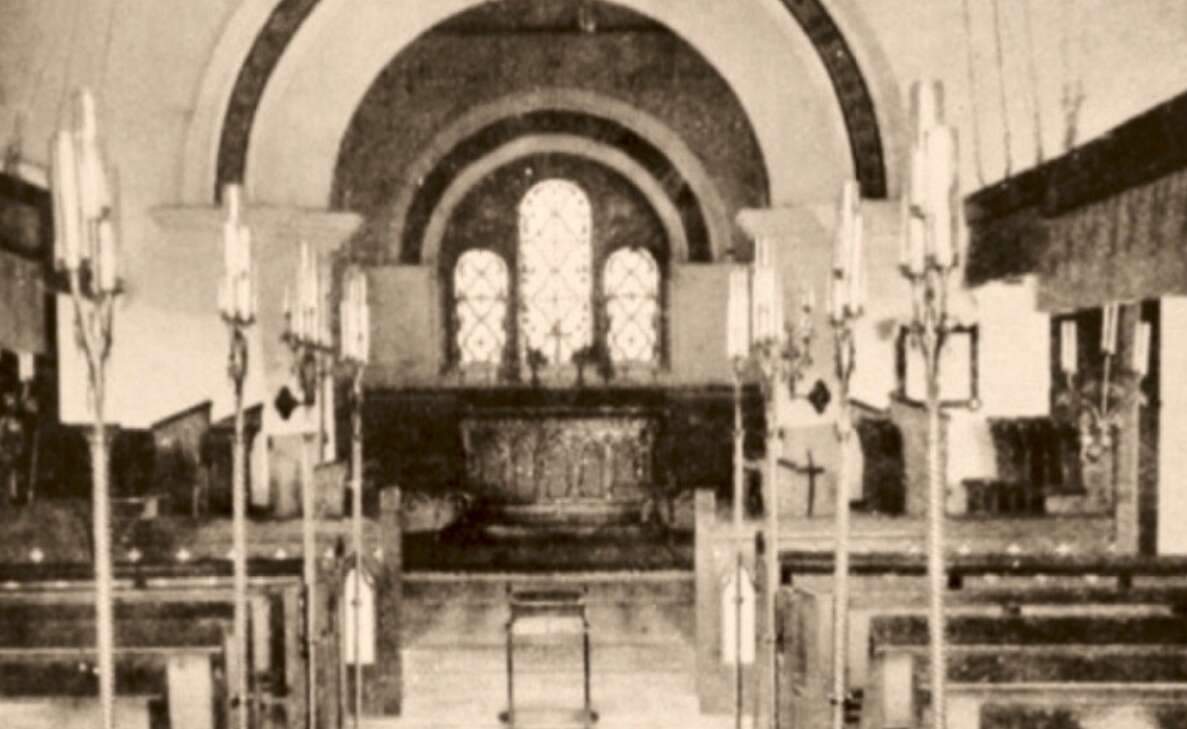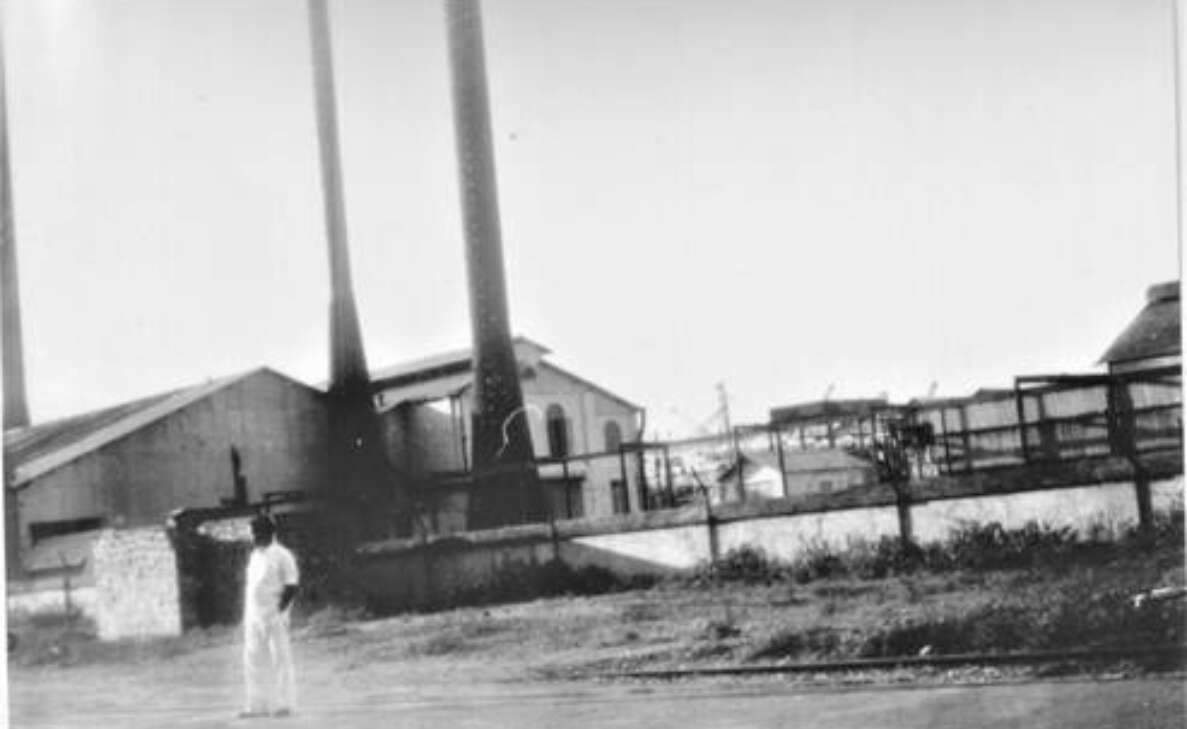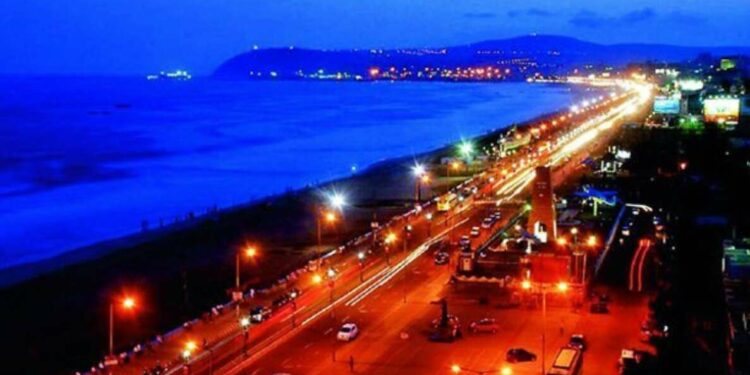Visakhapatnam has undergone a remarkable transformation over the years, with electricity playing a pivotal role in its development. From a quaint town to the bustling urban jungle, it is today, the beach city has undergone a dramatic metamorphosis. How electricity found its way into the heart of the City of Destiny is a captivating tale of progress and innovation. Marking the 115th anniversary of the first electrification reported in Visakhapatnam, Vijjeswarapu Edward Paul, a city heritage enthusiast, narrates the origin of electricity in the city.
The origin of electricity in Visakhapatnam appears to be in St Aloysius Technical School in the old town. The industrial school brought generators for their use to run their machines. On the occasion of the opening of a new building of St Aloysius School, the building was lit up with electrical lights as a demonstration of electrical lighting. Bro Emile of the St Aloysius Industrial School demonstrated electrical lighting on 14 May 1908, marking the first use of electric power in the city. This event was reported in the Madras Mail in May 1908. This report was brought to light recently during the 175 years celebrations of St Aloysius School by John E Castellas, an old student of that school, now residing in Australia.
The Waltair Club in the city got two diesel-generating sets supplied by M/s Crompton Engineering Co in 1912 for lighting their club, as per the club’s history. Later St Paul’s Church at Waltair got its electric installation in 1915. The old candle lights were replaced with electric bulbs and their Pankhas with fans. The total cost of the electrification was subscribed by the members of the Church. The old Punkhas of the Church were later sold away, as they were still saleable items with no sign of electricity coming to the city in the near future.

The next institution in the city to get electricity was the King George Hospital in 1923. During its initial stages of planning and construction itself, a powerhouse to generate electricity for its needs was taken up and installed. After 1923, another generating set was installed in KGH to meet the new demands due to an increase in bed strength, wards and new buildings.
In all the above four institutions, the electricity generated was meant for their institutions’ use only, not for the use of the general public. The electricity for use by the city’s general public came in the form of a power generating plant at Visakhapatnam Port which was also initially meant for its own use. The plant had two generating sets each with a capacity of 300 KW, run with the power of steam.
One of the engineers connected with the construction of the harbour mentions in his report that “An electric installation has been installed for providing power and light to harbour. It is also proposed to supply current in bulk to the municipal lighting authority and the Bengal Nagpur Railway. An extension of the plant will become necessary if both proposals are carried out, and the design allows to be added as required”.
It appears that a proposal to provide power from this powerhouse to the municipal authorities for lighting houses, offices and streets was under active consideration from the time the construction of Port neared its completion.
During that time one Dantuluri Lakshmi Narasimha Raju, who had his degree in engineering from London and was doing construction works for the port, railways and the Govt of Madras, incorporated a company in the name of “Andhra Engineering Co” (AECO). He obtained a licence in favour of AECO in 1933 under the Electricity Act of 1910 from the government for the supply (distribution) of electrical energy to Visakhapatnam City from the port’s powerhouse. As AECO did not have sufficient capital to undertake the job, DLN Raju floated a public limited company in the name of “Vizagapatam Electric Supply Corporation” (VESCO). AECO’s licence for electric supply was transferred to VESCO. The role and functions of the VESCO were almost the same as those of the present-day regional power distribution companies in Andhra Pradesh. (APEDPCL, APSDCPL and APCDCPL)
VESCO started supplying Electricity to the town of Visakhapatnam in 1934 when the port power generating station started its operations. The general public of Visakhapatnam town was provided with electricity for the first time. The municipality provided electric streetlights. The old timers in the city used to say that the Port used to work only during day time and that it shared the power with the townspeople only during nighttime.

D Suryanarayana Raju son of DLN Raju of VESCO standing outside the Power Stations
The Madras government in the meanwhile studied the power needs of the Andhra districts and proposed various schemes. To meet the needs of Visakhapatnam city, an investigation work for a hydroelectric scheme at Lambasingi was started in the year 1935-36 which was later dropped in 1937 as it was found uneconomical. A thermal scheme for Rs 18.70 lakhs in Visakhapatnam was sanctioned in 1936-37. The Port Powerhouse was purchased by the Madras Govt in 1937-38. The new thermal plant of the Madras government was started adjacent to the port power plant in the port area. The new government thermal plant at Visakhapatnam was completed and put into operation on 26 March 1938. With both the power stations, the one purchased from the port and the new one erected by the Madras Govt, in operation, the town of Visakhapatnam seems to have been provided with electricity for 24 hours from that day onwards.
At this point, a mention needs to be made about the Japanese bombing of Visakhapatnam in World War II. It was reported that on 6 April 1942, when the Japanese planes bombed the port, one of the bombs fell on the powerhouse. Though, apparently, it did not cause any serious damage, the city went without power that night.
As the power generated in Visakhapatnam and Vijayawada thermal power plants was still not sufficient to meet the demands of the Telugu districts, the government of Madras resumed the Machkund Hydro Electric scheme which was initially contemplated in the year 1929. At that time, the whole of the Machkund area was under Madras state. But in 1936, a new separate state of Orissa was formed and the Machkund River became the delineated boundary between Orissa and Madras states. So the scheme was taken up as a joint project under an interstate agreement executed between Orissa and the then Madras Government in 1945. As per the agreement, the Madras government was to execute the project. The work was started in 1946. While the work was in progress the Telugu districts in Madras state were separated to form Andhra State with its capital in Kurnool. The Government of Andhra continued the execution of the project.
All through this period, the VESCO, the licensee for the supply of electricity to the town of Visakhapatnam, was continuing its operation. In June 1952 the VESCO undertaking was acquired by the Madras Govt, under the provisions of the “‘Electricity Undertaking Acquisition Act”. The VESCO office and workshop located near the present GVMC Sewage Farm in the old town, with all its other properties, was taken over by the Govt. Thus, the role of VESCO, which initially supplied electricity to Visakhapatnam town, was brought to an end.
Meanwhile, the execution of the Machkund project by the Andhra government continued and the first generation unit was completed in 1955. The generation and supply of electricity from the Machkund project were switched on by then President of India, Dr Rajendra Prasad, from Visakhapatnam City on 9 August 1955. (The writer of this article had the privilege of attending that “switching on” function in Visakhapatnam, as a boy of 9 years, through the courtesy of an acquaintance working in the electricity department. All the enthusiasm at that age was only to see the President of India.)
By 1959, all six units of generation at Machkund were completed and brought into operation. Then the Government of Andhra Pradesh decided to close the thermal power station at Visakhapatnam in 1966, which included the powerhouse purchased from Visakhapatnam Port. All the equipment and machinery was shifted to other thermal stations in the state and the site of the thermal power station was handed over back to Visakhapatnam Port. With this, the role of Port Power House, which first provided electricity to Visakhapatnam City in 1934, also came to an end.
New institutions have taken up the generation and supply of electricity with new technologies to meet the ever-increasing demands. The roles of Visakhapatnam Port’s Powerhouse and the Visakhapatnam Electric Supply Corporation which paved the way for the origin of electricity in Visakhapatnam have finally been consigned to history.

Compiled by Vijjeswarapu Edward Paul
Email: [email protected]
Mobile: +91 94401 73695
Stay tuned to Yo! Vizag website and Instagram for more heritage stories.










Discussion about this post